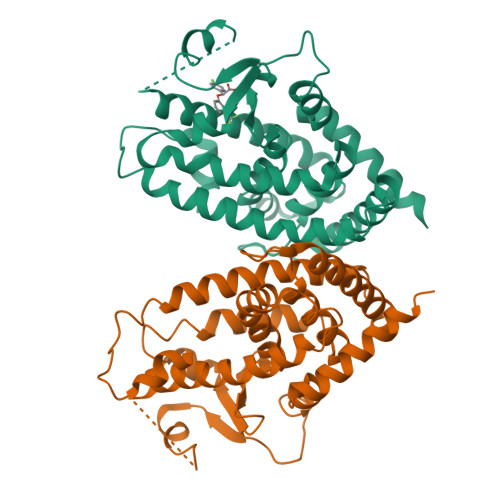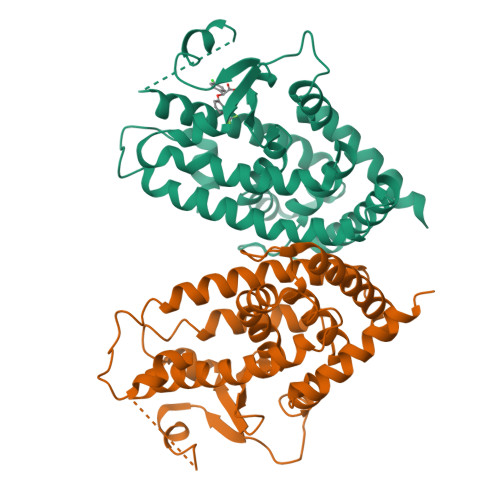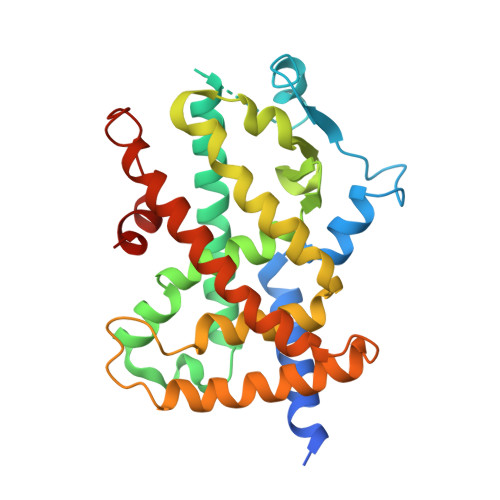On the metabolically active form of metaglidasen: improved synthesis and investigation of its peculiar activity on peroxisome proliferator-activated receptors and skeletal muscles.
Laghezza, A., Montanari, R., Lavecchia, A., Piemontese, L., Pochetti, G., Iacobazzi, V., Infantino, V., Capelli, D., De Bellis, M., Liantonio, A., Pierno, S., Tortorella, P., Conte Camerino, D., Loiodice, F.(2015) ChemMedChem 10: 555-565
- PubMed: 25641779
- DOI: https://doi.org/10.1002/cmdc.201402462
- Primary Citation of Related Structures:
4PVU, 4PWL - PubMed Abstract:
Metaglidasen is a fibrate-like drug reported as a selective modulator of peroxisome proliferator-activated receptor γ (PPARγ), able to lower plasma glucose levels in the absence of the side effects typically observed with thiazolidinedione antidiabetic agents in current use. Herein we report an improved synthesis of metaglidasen's metabolically active form halofenic acid (R)-2 and that of its enantiomer (S)-2. The activity of the two stereoisomers was carefully examined on PPARα and PPARγ subtypes. As expected, both showed partial agonist activity toward PPARγ; the investigation of PPARα activity, however, led to unexpected results. In particular, (S)-2 was found to act as a partial agonist, whereas (R)-2 behaved as an antagonist. X-ray crystallographic studies with PPARγ were carried out to gain more insight on the molecular-level interactions and to propose a binding mode. Given the adverse effects provoked by fibrate drugs on skeletal muscle function, we also investigated the capacity of (R)-2 and (S)-2 to block conductance of the skeletal muscle membrane chloride channel. The results showed a more beneficial profile for (R)-2, the activity of which on skeletal muscle function, however, should not be overlooked in the ongoing clinical trials studying its long-term effects.
Organizational Affiliation:
Dipartimento di Farmacia-Scienze del Farmaco, Università degli Studi di Bari "Aldo Moro", 70126 Bari (Italy).

















